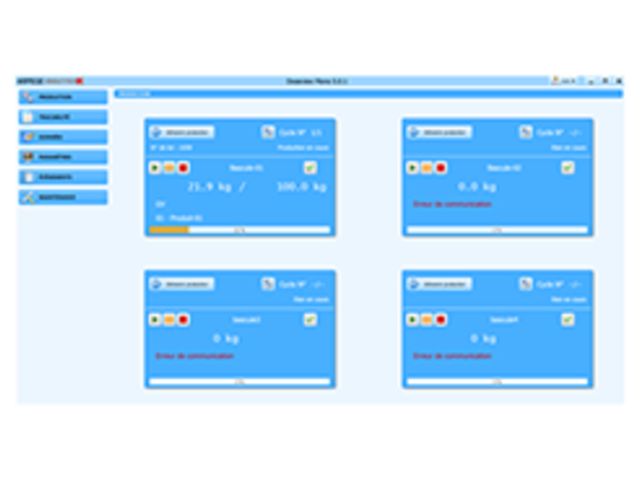
- #Karel software solution fanuc .ls install#
- #Karel software solution fanuc .ls update#
- #Karel software solution fanuc .ls code#
#Karel software solution fanuc .ls install#
Moreover, if you should ever need to replace the torch, you can place the new torch in the alignment tool before you install it.Ĭreate and maintain a good tool center point (TCP), as well as a check job, which confirms the TCP location and alignment before touching up points. If it is not, use the tool to bring the bend in line, guaranteeing a correct angle on the torch. Before doing any programming, place the torch in the tool and ensure the bend is correct. The reason is a 45-degree torch from a manufacturer is not always the same as a 45-degree torch in a robot workcell. Most manufacturers sell them and most will work for multiple torch models. Here are some tips to keep in mind for the business end of the robot. More so, the ability to program and maneuver a weld torch with the utmost efficiency is equally important. Heat Input = (Amps x Volts) / Travel Speed Welding Torch Do’s and Don’tsĪ critical factor for robotic welding is choosing the right weld gun for the task at hand. Travel speed has the most pronounced effect on heat, as noted by heat input: Wire feed speed and voltage control the “burn” of the wire and can be adjusted to reduce spatter. Use travel speed to adjust the heat or fill for various joint fit-ups.

Robots may have the ability to log changes to programs, but they may not include the reason for changes.ĭo not create programs with improper control axes, especially if the system is equipped with coordinated positioners or multiple robots. Keep a log or change record for the robot workcell where technicians can note the date, time, and reason for changes. A part print with weld locations and program points noted can serve the same purpose. This part should be labeled with weld numbers and arc size file numbers, which allows for a quick reference for weld adjustment. While the best course of action for learning robotic programming is to acquire training from your robot brand OEM, it never hurts to implement expert-proven robotic welding tips and tricks from the start. Other welding-related tips can help simplify the process. Examples include the setup and use of established weld procedures for various joint conditions common in your operations. Some of the practices outlined in welding codes can help to “control” the application of robots for the fabrication and manufacturing world. The gas metal arc welding (GMAW) process is the same for robotic welding as it is for semiautomatic welding. General Do’s and Don’ts of Robotic Welding Programming As with any specialty process, there are steps that you must take when programming a weld sequence and certain things to avoid. However, robotic welding can be a complex process, especially if you are a new robot programmer. When it is done correctly, robotic welding can provide manufacturers with significant productivity gains, as well as an excellent return on investment (ROI). We reserve the right to cancel or modify classes at any time.Robotic welding can be a complex process, especially if you are a new robot programmer. Please ensure the software is loaded prior to the first day of class.*** ***This KAREL class requires students to bring their laptop with ROBOGUIDE software already loaded. Prior programming experience on a high level language such as “C” or PASCAL may be helpful. RoboGuide/HandlingPRO class, or eLearn, is also required. Completion of an online eLearn Operation and Programming course will not meet this Operation and Programming prerequisite. Prerequisites: Completion of a live, FANUC instructor led Operation and Programming course (such as HandlingTool, ArcTool, SpotTool). Such as electricians, technicians and operators, who install, repair, test and maintain the R-30iB Controller. Test and run KAREL and teach pendant programs in RoboGuideĬoncepts covered in this course include language syntax, branching constructs, system variables, simple KAREL logic, TPP motion control, I/O and recommended safety procedures.Īudience: This course is intended for programmers who have a good understanding of TPP programming and HandlingPRO/RoboGuide.
#Karel software solution fanuc .ls code#
The course is focused on the interpretation of existing code and development of simple application programs.Ĭourse Objectives: Upon successful completion of this course, the student will be able to:
#Karel software solution fanuc .ls update#
Instruction includes concepts that explain fundamental programming techniques using RoboGuide to create and update TPP as well as KAREL programs. This course covers the fundamentals of the KAREL programming language.


 0 kommentar(er)
0 kommentar(er)
